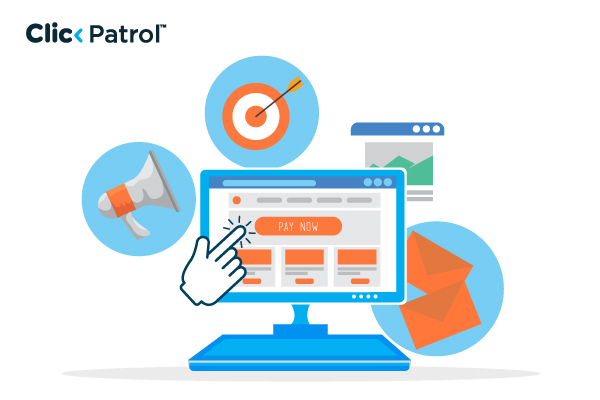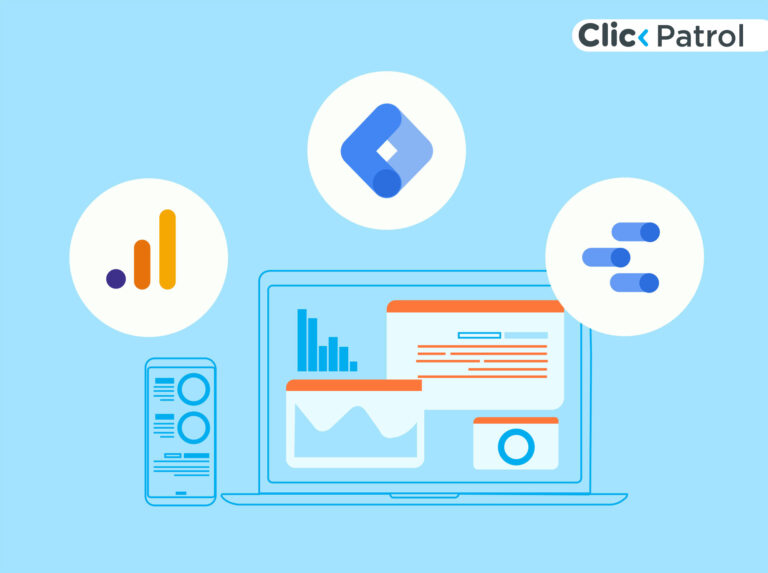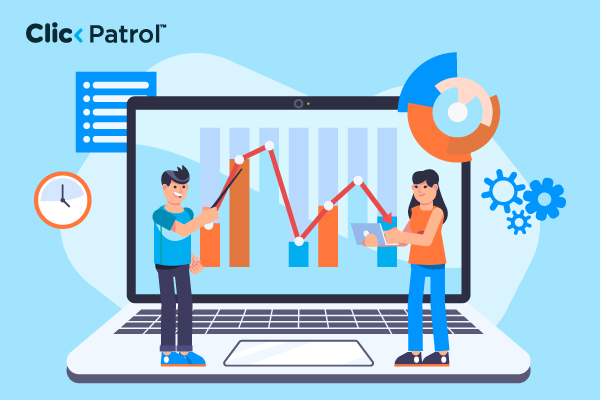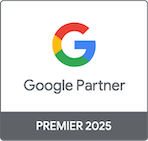The current Meta ad fraud debate highlights how vulnerable advertisers are when they rely solely on platform reporting for verification. For PPC advertisers, it is a warning signal that impression and click numbers can be overstated or misrepresented, which directly affects budget efficiency and decision making. It underlines the need for independent tools and processes that verify traffic quality across Meta, Google Ads and Microsoft Ads rather than trusting platform dashboards alone.
Meta Ad Fraud Concerns Put PPC Transparency Back in the Spotlight
Abisola Tanzako | Nov 27, 2025

Fresh questions over Meta ad fraud, media censorship claims and strategic media consolidations are sharpening focus on how reliably ad budgets are spent and measured. For PPC professionals, the latest disputes reinforce a familiar risk: platforms control the inventory, the reporting and often the auditing, while you carry the budget risk if impressions or clicks are inflated by fake activity.
Table of Contents
From our position at ClickPatrol, we see these developments as another signal that advertisers cannot rely solely on platform-side verification to protect against fake clicks or misrepresented reach. Independent traffic validation is no longer a nice-to-have but a budget protection requirement.
Meta ad fraud allegations reignite trust concerns
The debate around Meta ad fraud is resurfacing as publishers and marketers question how social platforms count impressions, attribute conversions and report delivery across their ad networks. Disputes over whether ads appeared where they were supposed to, or were seen by the audiences claimed, raise the same core issue we see with click fraud in PPC campaigns: opacity in how traffic is generated and reported.
When a single platform controls the auction, the targeting, the placement and the verification, the incentive to overstate performance is strong. Even small discrepancies in how impressions or clicks are counted can translate into millions in extra spend that delivers little or no business value.
For performance marketers running Meta Ads alongside Google Ads and Microsoft Ads, this reinforces the case for independent monitoring. You need to know not only where ads appeared, but whether the resulting visits behaved like real users or like automated and repeated traffic.
Key implications for PPC and traffic quality
The wider media briefing that highlighted Meta ad fraud concerns also touched on censorship debates at major broadcasters and strategic campus moves by holding groups. Taken together, these trends push transparency and control to the top of the agenda for anyone responsible for digital performance.
- Rising scrutiny of platform metrics: Public disputes over inflated or misleading performance numbers make it harder for advertisers to accept platform reporting at face value.
- Greater need for independent verification: Brands and agencies are increasingly expected to show how they validate impressions, clicks and conversions outside of walled gardens.
- Budget risk sits with the advertiser: If reported results later turn out to be overstated because of fake activity, it is the advertiser who has already paid the bill.
- Pressure on agencies to prove traffic quality: Media buyers must demonstrate that they are actively filtering invalid traffic, not just optimizing bids and creatives.
For PPC teams, this environment calls for more than standard platform fraud filters. It calls for independent systems that evaluate every click against behavioral patterns, device signals and repetition, and block suspicious sources before they consume more budget.
How Meta ad fraud concerns echo paid search click fraud
The current questions around Meta mirror long running issues we see in search and display advertising. In Google Ads and Microsoft Ads, fake clicks can come from infected devices, organized schemes or even aggressive competitors. On social networks, similar dynamics appear as non-human impressions, low quality placements or traffic routed through obscure partner apps and sites.
In practice, we commonly see:
- Clusters of clicks from the same IP ranges or devices that never progress beyond the landing page.
- Unusual spikes in click volume during short time windows, often from geographies that are not central to the advertiser’s target market.
- Campaigns with reasonable click through rates but abnormally low engagement metrics in analytics tools.
These are the same types of signals that can indicate problems when Meta campaigns show strong reported delivery but weak on-site behavior. If you only look at platform dashboards, you may miss the real story behind that traffic.
Why independent click protection matters now
With large platforms under scrutiny, regulators and industry bodies are pushing for more transparency. Yet even where rules tighten, enforcement can be slow and disputes over measurement can drag on. While that happens, your campaigns are live and your budgets are exposed.
Independent click protection closes that gap. Our systems at ClickPatrol analyze many behavioral data points for every click across Google Ads, Meta Ads and Microsoft Ads. We flag and block patterns that indicate fake, automated or repeated activity, so you are paying for real users who actually engage.
This approach has three practical benefits for PPC teams:
- Cleaner data: When invalid clicks are filtered out of your analytics, metrics like conversion rate and cost per acquisition reflect real user behavior.
- Better decisions: You can scale the campaigns, keywords and audiences that genuinely perform, rather than those inflated by suspicious traffic.
- Protected budgets: Wasted spend on bots and repeat clickers is cut down, freeing budget to reach qualified prospects.
What PPC professionals should do next
In light of the renewed Meta ad fraud debate and ongoing concerns around platform self reporting, we recommend a few immediate steps for performance marketers:
- Audit your Meta, Google Ads and Microsoft Ads campaigns for anomalies in click behavior, bounce rates and session duration.
- Segment performance by placement, device and geography to identify pockets of low quality traffic.
- Introduce independent click validation so you can track and automatically block suspicious activity, rather than relying entirely on platform filters.
- Review contracts and reporting requirements with agencies to ensure traffic quality is explicitly monitored and reported.
At ClickPatrol, we work with brands and agencies that want clearer visibility of their paid traffic and stronger protection for their budgets. If the latest Meta ad fraud discussions have raised concerns inside your team, this is an opportune moment to test external click protection, start a free trial and benchmark how much of your spend is actually reaching real users.
Frequently Asked Questions
-
What do the latest Meta ad fraud concerns mean for PPC advertisers?
-
How is Meta ad fraud similar to click fraud in Google Ads and Microsoft Ads?
Meta ad fraud and click fraud in Google Ads and Microsoft Ads share the same core issues inflated or fake interactions that look like performance on platform dashboards but do not represent real user interest. In all three environments, traffic can be generated by automated systems, low quality partners or repeat clickers. The result is wasted spend and misleading data unless you have external systems, such as ClickPatrol, to analyze user behavior and block suspicious activity.
-
What practical steps should I take if I suspect invalid traffic on Meta campaigns?
If you suspect invalid traffic, start by segmenting results by placement, device, geography and time of day to spot anomalies such as unusual spikes or very low engagement. Compare platform-reported clicks with on-site analytics to see whether sessions behave like real users. Then bring in independent click protection like ClickPatrol to monitor every click in real time, automatically block repeat and suspicious sources, and give you cleaner data for optimization.
-
How do these Meta ad fraud stories affect my media budget and ROI targets?
Public disputes over Meta ad fraud mean that parts of your reported performance may not be as strong as they appear if some interactions are fake or low quality. This can inflate reach and click metrics while actual leads or sales lag behind, putting pressure on ROI targets. By filtering out invalid traffic and challenging suspicious patterns early, you protect your budget from being spent on worthless interactions and give yourself a more realistic view of what your campaigns are truly delivering.
-
Why should I use ClickPatrol instead of relying on Meta or Google to handle fraud filtering?
Platform fraud filters are designed by the same companies that sell you the media, so they are not incentivized to aggressively remove every questionable interaction. ClickPatrol acts as an independent layer across Meta, Google Ads and Microsoft Ads, analyzing each click based on behavioral patterns, repetition and technical signals. This independent view allows you to automatically block fake, bot or repeated clicks, protect your budgets, and base optimization decisions on data you can trust, rather than on numbers that may be inflated by invalid traffic.






